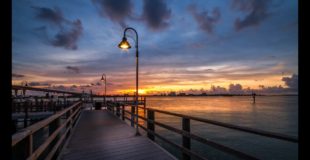Download the files to follow along this tutorial : https://www.photoserge.com/offers/t73jGco2
In this episode I go over my best tips on shooting night photos :
1. Shoot with a tripod at 100 ISO.
2. Shoot with a closed shutter over F13 for long exposures, lights become stars, clouds and water are nicer.
3. Shoot when you still have details in the sky.
4. Use a remote control to go over 30 seconds of expo.
5. See a full retouch for getting good color, light and local contrast.
Original source

25 responses to “My best tips on shooting & retouching night photos Lightroom 5 tutorial – PLP # 55 by Serge Ramelli”
sir can u explain where to focus to get everything Sharp??
Serge,
there is one thing I noticed, you did not enable Profile Corrections and also not remove Chromatic Aberration. Those are the 2 things I normally do first in LR.
C'est cool mais je trouve la fausse lumière du lampadaire vraiment affreuse :p
Excellent, Explaining sharp and crispy.
Awesome Vid! Merci ^^
nice clip guyzz…:)
Do these tips apply to Christmas Lights outdoor photography? I have a pond with floating Christmas trees. And have a problem of overexposed reflection lights. How do I fix that?
I'm very passionate about learning! I should have been doing this 30 years ago! lol
Thanks Serge! My ancestors where from Paris and Normandy!
Hi Serge, this was the first of your tutorials that I watched and it inspired me so much. I enjoy watching your videos and have learnt a lot from you. Thank you so much for sharing your creative work with us and hope to see you in Paris one day
Why not using brushes instead of radial ?
what a horrible accent
Thank you +Serge Ramelli
Serge, if you get Magic Lantern for your 5d you can do over 49 second exposures without a remote. Just FYI 🙂
Serge, If you came to the U.S.A , I would love to show you around . We have so much to offer , we are rich in History and in colorful photos. You could spend months g=here and still not see it all. If you w=ever get crazy bug to travel I will give you my phone number .
Thank you for sharing all of these wonderful photos , I appreciate it.
Kevin
Too much "fixing" with the images takes out the whole point of taking pictures.
Thank you for the video sir
when french people speak English…
Amazing tutorial….super génial the tricks 🙂
I tried taking a long exposure imagie at night time, but I allways end up with the same problem….. hot pixels, I was told Lightroom remove them automatically, but for some reason my Lightroom doesnt, and there was so many hotpixels 🙁 I tried the "cleans censor" function, but didnt help…. I own a D3200 so a entry level camera but should I still end up with tons of hot pixels?
Why not just accept how the photo was taken on the day (or night)!
I love the creativity on this video, but every time I look at something like this, I don't understand why making more stuff than what was originally on the photo, like the fake lights.
I mean I love the original photo and I don't understand this "fashion" of change an correct almost everything. I don't mind the exposure or the clarity or the contrast or the saturation, but why make a light if in the original wasn't there? Don't get me wrong the effect is fantastic, but just why?
Other than that (which is my personal preference!) you are an amazing amazing artist and I so admire your works and you're also an amazing teacher, I've learned a lot!
I know I am commenting on an old video, but it helped me a lot! Thank you. 🙂
Serge, thanks for the tutorial. One thing though: you are making me home sick with these photos from the Gulf coast of Florida. More photos from France please 🙂
Great vid, Serge. One thing though. At f20 lens will lose on sharpness, and that can add up especially when you plan on doing digital blending or HDR. It would be better to suggest using ND filter, and open the aperture to say F 11 or f16. You can get the star effect on lights starting at f8, or even lower. And if necessary you could always use the plugin from KNOLL and add starry flares, or shoot one exposure at f20 and mask those star effects in photoshop.